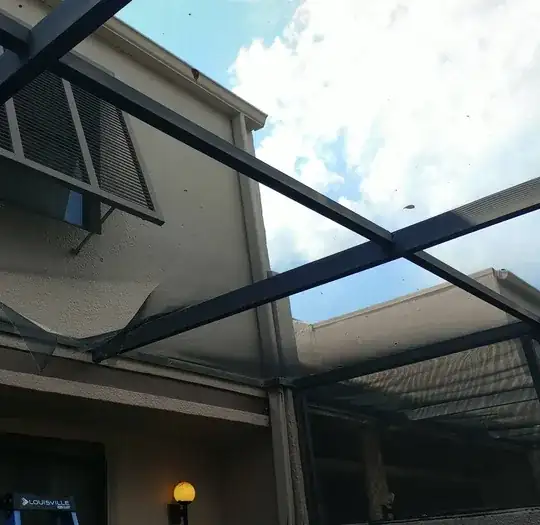What happens when a groundplane antenna's vertical element, bottom feedpoint, and/or bottom loading coil move down and encroach into the area below the plane formed by its own perpendicular elevated radials?
I have never seen a book or article about ground plane antennas directly address this question.
I've read that the feedpoint impedance is theoretically 35 ohms when the elevated radials are perpendicular to the vertical element, and that tilting their outer ends downward causes the impedance to increase until it reaches 50 ohms. What happens if you continue tilting them never gets discussed. My hunch is that as the radials become increasingly vertical and merge into the bottom half of a vertical half-wave dipole, its impedance approaches that of a dipole.
Based upon that, I'd expect that if you tilted the radials upwards, the feedpoint impedance would get smaller and smaller and approach zero as the radials effectively merged into the vertical element itself. Taking a wild guess... the (imaginary) j component approaches infinity?
I've read that with vertical antennas at ground level, a "virtual" bottom half of the dipole mirrors it below ground level. Assuming the same thing happens with the ground plane formed by elevated radials, it seems logical that pushing part of the vertical element below that plane would cause the real vertical element's lower portion, and the upper portion of its imaginary mirror, to encroach into each other's space and virtually overlap. Once again, j->infinity, and Bad Things Happen?
Background
I live in a townhouse, and my back yard is surrounded by 6 foot tall concrete walls with an aluminum-framed screen enclosure (basically, like a typical Florida pool cage) on top (10 feet from ground to top, 2 feet from wall-top to enclosure-top).
I'm presently re-screening it (for reasons that are obvious from the photo), and decided that I might as well take advantage of the opportunity to replace the dented downspout and improve it a bit in case I ever want/need to use it as a vertical antenna element in the future.
The screen enclosure frame will serve as the ground plane. My neighbor graciously allowed me to connect their enclosure frame to mine near the proposed feedpoint and run a discreet AWG22 radial wire up along the edge of the sloping roof you see in the background, so the radial field ought to be "decent", if not literally "good" (at least, towards the north, east, and south).
I ran some preliminary tests using my NanoVNAv2, and was pleasantly surprised to see almost-perfect SWR on 20m (1.04:1 to 1.20:1), and SWR below 2.5:1 for both 15m and 17m.
I also have a W3FF loading coil (formerly used with a Buddipole) available that I plan to use at the bottom as well, though I didn't test with it.
I'm mentioning all of this to make it clear that I'm not just naively attaching wires to an as-is downspout in the hope it might randomly work. It's more like I'm deliberately building a coil-shortened quarter-wave groundplane vertical whose large-diameter rectangular radiating element hides in plain sight from the HOA as the upper portion of a downspout. ;-)
Anyway, here's my quandary: the new downspout is 10 feet long. There are at least two ways I can use it:
Cut it down to 93" (like my experiments with the old one), so the insulator lies above the ground plane formed by the screen enclosure.
Leave it 120", or cut it to some shorter length that's still long enough to put its lowermost portion below the ground plane.
Option 2 potentially offers a few advantages:
If I use the full 120" length, and mount the coil slightly below it, I'll be able to reach up and change bands without needing a stepladder.
When dealing with a coil-shortened quarter-wave vertical groundplane antenna, longer is (almost) always better. In this case, up to 120" vs 93".
However... I'm still trying to understand the consequences of having a foot or two of the antenna's vertical element (and the loading coil) lying below the antenna's ground plane.
If it's genuinely no big deal, being able to change bands and get at the bottom from below the screen would certainly be convenient... but I don't want to do a lot of work and have it all be for nought because the portion below the ground plane ends up destroying the antenna's effectiveness.
